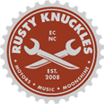
Can't live without our radio, nor can the masses for music discovery

With so many different channels for discovering and listening to
music and, with massive generational shifts under way, it's impossible
to tell what the music business will look like even in the short-term.
FORTUNE -- Nielsen's "Music360" survey of consumers shows an industry in chaos, with no clear idea of what music distribution will look like in five years, let alone 10.
The Internet, of course, will be the primary means by which most people discover new music. But it's impossible to know through which channels that discovery will take place. While lots of adults still discover new music through traditional radio, 64% of teenagers cite YouTube (GOOG) as their primary source for listening to music. This despite the growth of services like Pandora (P) and Spotify. The difference between adults and teenagers is stark. Only 7% of all 3,000 respondents say their primary music channel is YouTube. A big change is under way.
At the same time, even teenagers, surprisingly enough, are still buying CDs: a third of them said they bought at least one CD in the past year. And half of all teens say they listen to music on CDs at least sometimes. Clearly, that doesn't mean CDs still have a future, but it shows that at least some teenagers (most of whom have never known a world without online music) are willing to shell out for music when they really like it.
The survey shows that, for now, traditional radio is still a major source of music discovery, with 48% of respondents -- more than with any other medium -- saying that's where they discover most of their new music. Also surprisingly, the difference in perceived "value" between digital music and CDs is rather narrow. Nearly two-thirds of all respondents (including adults) say digital music is a good value. But 55% of them say the same thing about CDs.
The popularity of YouTube as a music channel should give some pause to those who believe mobile music apps are the wave of the future. Apparently, many teenagers seem to think YouTube is easy enough to use and to find the tunes their friends are talking about -- or that they heard on the car radio on the way home from school.
 |
| The new power brand in music is youtube |
The following is a small sampling of insights included in the Music 360 report:
Radio is still the dominant way people discover music
• 48% discover music most often through the radio
• 10% discover music most often through friends/relatives
• 7% discover music most often through YouTube
More teens listen to music through YouTube than through any other source
• 64% of teens listen to music through YouTube
• 56% of teens listen to music on the radio
• 53% of teens listen to music through iTunes
• 50% of teens listen to music on CD
Positive recommendations from a friend are most likely to influence purchase decisions
• 54% are more likely to make a purchase based off a positive recommendation from a friend
• 25% are more likely to make a purchase based off a music blog/chat rooms
• 12% are more likely to make a purchase based off an endorsement from a brand
• 8% of all respondents share music on social networking sites, while 6% upload music.
Music player apps are most prevalent, followed by radio and music store apps
• 54% have music player apps on their smartphones
• 47% have radio apps on their smartphones
• 26% have music store apps on their smartphones
Males purchase rock music most often, while females prefer top 40
• 38% of males purchase rock most often
• 15% of females (compared to 9% of males) purchase top 40 most often
Digital music is seen as a slightly better value than a physical CD
• 63% of purchasers identified digital albums as a very or fairly good value
• 61% identified digital tracks as a very or fairly good value
• 55% identified physical CDs as a very or fairly good value
Younger consumers who do buy digital tracks, are more likely to purchase new music immediately after its release
• 33% of teens purchased a digital track within one week of release
• 21% of persons 18+ purchased a digital track within one week of release
• 36% of teens have bought a CD in the last year; 51% of teens have purchased some kind of music download
18-24 year olds are most likely to attend a music event (among those who attend any type of live event)
• 7% attending once a week or more
• 30% attending once a month
Although 18-24 year olds attend more live events, teens are more likely to purchase T-shirts and posters while there.
• 54% (compared to 46% of 18-24 year olds) of teen attendees purchase concert tees
• 14% (compared to 7% of 18-24 year olds) of teen attendees purchase concert posters
Listeners enjoy hearing movie soundtracks over music related TV shows or video games
• 42% enjoy hearing music via music related TV show
• 59% enjoy hearing music via movie soundtracks
• 28% enjoy hearing music via music related video games
Older consumers have decreased their spending the most during the current economy
• 41% of respondents 55+ reduced their spending to a large degree
• 39% of respondents 45-54 reduced their spending to a large degree
• Only 28% of respondents age 25-34 reduced their spending to a large degree
Data for Music 360 were collected via 3,000 online consumer surveys using Nielsen’s proprietary, high-quality ePanel in the United States. Topics addressed in this study include: where/when music is consumed, through which device(s), apps and services; digital vs. physical purchases; the process of discovery, and how/when discovery converts to purchase; insights around spending, share of wallet, and retailer preferences; live events; and much more.

